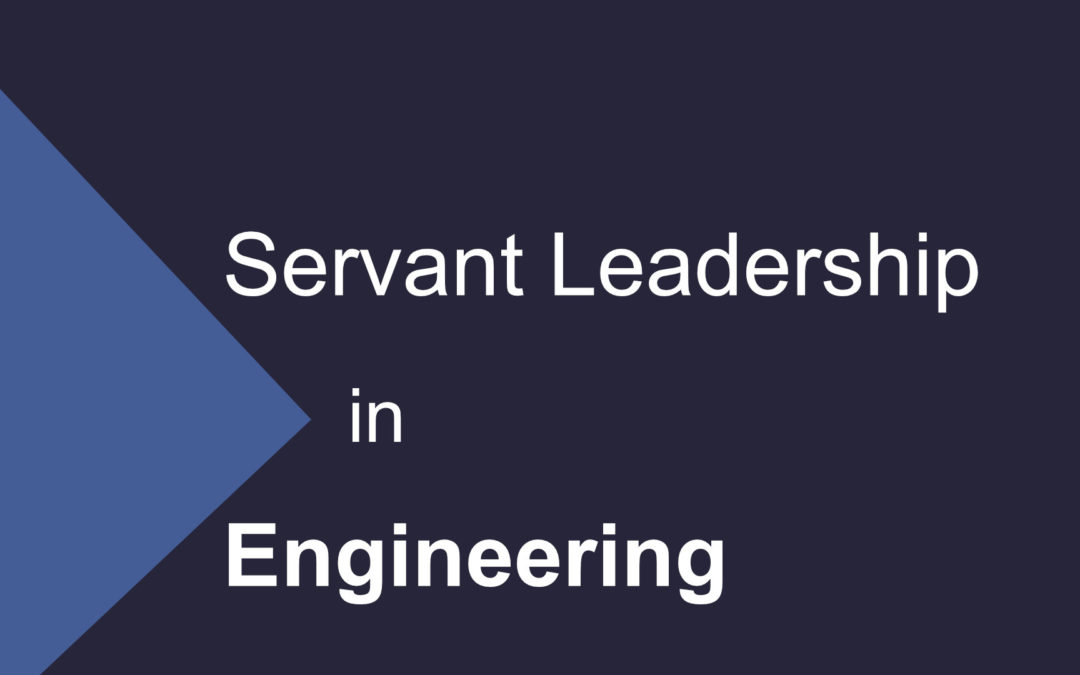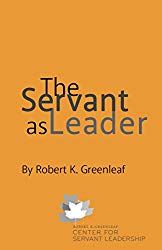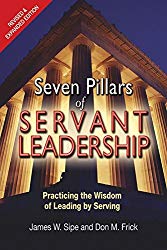As engineers, we produce innovative new products. We solve difficult problems through the application of science and math. We employ critical thinking to figure out how things work and make it possible for others to live simpler or more efficient lives because of our efforts.
In other words, we serve.
Because of this, the servant leadership model provides an ideal and logical approach to leadership within engineering organizations.
What Is Servant Leadership?
In 1970, Robert K. Greenleaf published an essay titled The Servant as Leader which detailed the concept of servant leadership. While the concept was not new – it dates back to around 600 BC in the writings of Chinese philosopher Lao Tzu – this was when the term “servant leader” was coined and when the modern study of the philosophy took off.
“The servant-leader is servant first,” wrote Greenleaf. “It begins with the natural feeling that one wants to serve, to serve first. Then conscious choice brings one to aspire to lead.”
In many traditional forms of leadership – as I’m sure you’ve seen on a number of occasions at work – leaders tend to accumulate and exercise power from the top of the office or departmental pyramid.
Servant leadership is not, however, about inverting the pyramid. Rather, it’s about empowering others. Servant leaders share power and put the needs of others first. They focus on the growth and well-being of people, thereby helping them to develop and perform to the best of their abilities.
Attributes of Servant Leaders
The bookshelf next to my desk holds eleven books on the topic of servant leadership. My Kindle app has another five. While I’ve learned from each of those books, my all-time favorite book on servant leadership and the one I recommend every chance I get (including right now as you read this) is Seven Pillars of Servant Leadership by James W. Sipe and Don M. Frick.
The book not only describes servant leadership and looks at the seven primary attributes of servant leaders, it also provides practical examples for how you can implement servant leadership in your office or organization.
Take a look at yourself and your organization’s leaders. Are the attributes of servant leaders already being upheld?
- Person of Character – A leader is honest, trustworthy, authentic, humble, leads through their conscience (not their ego,) and is committed to the desire to serve something beyond themselves.
- Puts People First – A leader serves first, connects their own self-interest to the needs and interests of others, and leads in a manner which ensures that others grow as individuals.
- Skilled Communicator – A leader seeks to understands first and then to be understood, listens receptively with warmth and interest, invites feedback from others, and seeks to influence with persuasion rather than power or position.
- Compassionate Collaborator – A leader invites and rewards the contributions of others, pays attention to the quality of work life, relates well to diverse individuals, and manages disagreements respectfully, fairly, and constructively.
- Foresight – A leader views foresight as a central, moral principle of leadership, can access their intuition, articulate and inspire a shared vision, and is a courageous decision maker.
- Systems Thinker – A leader demonstrates an awareness of how to lead and manage change, integrates input from all parties in order to develop a holistic solution, and connects systems thinking with ethical issues.
- Moral Authority – A leader values moral authority over positional authority, empowers others with responsibility and authority, sets firm yet flexible boundaries, and establishes quality standards for conduct and performance.
What Servant Leadership Means for Engineering
The first benefit is a faster path to developing more leaders in your organization. A key factor of servant leadership is that people are empowered and shown how to lead with moral authority rather than positional authority. That gives every engineer in your team the opportunity to lead from wherever they are in the organization. This pool of moral leaders ensures smooth growth when new positional leaders are needed.
Engineers are in constant need of professional development and growth. With a focus on growing the members of the team, servant leaders drive continual improvement in everyone. That means your team – and every individual on the team – will be better next month and next year than they are today.
Serving others, whether they are your customers or other members of your team, becomes a part of your organization’s culture. Cultures go beyond just values and brands. They are shaped by the behavior of senior leaders. When senior leaders serve, encourage, and empower, the team will follow suit with each other. This type of strong culture is addictive and team members will be hard pressed to find a better culture elsewhere – meaning, of course, that your staff doesn’t want to leave.
Final Takeaway
When I was given my first positional leadership role, I blew it. It was not a good time in my life. Mostly because I acted like a dictatorial jerk. I stepped down from that role and never wanted to be in charge again.
A friend and mentor introduced me to the concept of servant leadership. I began leading as a team member, someone with moral authority, and found joy in it. When I was given positional authority again, I continued to follow the principles of servant leadership and found that I enjoyed the position. I put my focus on my team by working to grow and engage them. There are no technical accomplishments in my engineering career that gave me as much pride and joy as stepping back, empowering my team, and watching them amaze the whole company.



